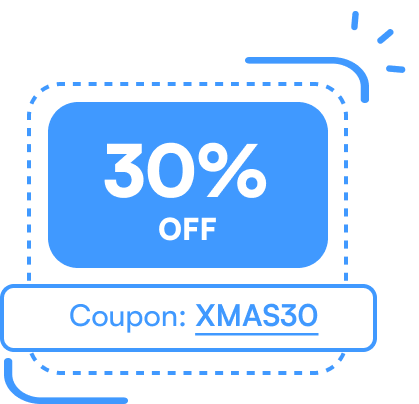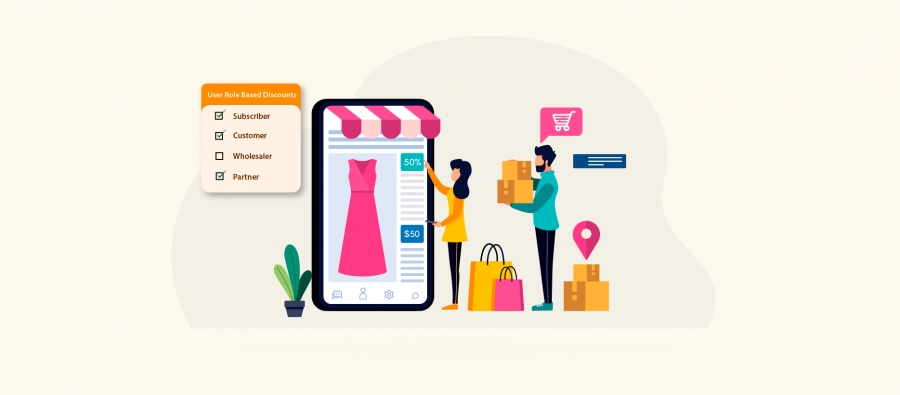Despite being the elder statesperson of the ecommerce world, email marketing is still unrivalled when it comes to overall promotional force, and is actually seeing something of a late-career renaissance owing to technological improvements. But with the potential for remarkable impact must come the potential for remarkable disappointment, and email marketing can be done incredibly ineffectively.
If you’re planning to run an email marketing campaign for an ecommerce store, you need to know what accounts for the difference in effect between a fantastic campaign and a terrible one. To that end, this piece is all about identifying the hallmarks of great email marketing CRM work, hopefully leaving you with a solid awareness of what you need to do for your next campaign.
Let’s get started!
It’s built around providing value
The very essence of ecommerce promotion is getting people to carry out particular actions (typically buying your items), and the key phrase to remember for this is quid pro quo — if you don’t offer your email recipients something of value, they won’t feel inclined to send any value in your direction in the form of their commerce or even their interest.
You may know what your value propositions are as a business (perhaps your products are the best, or your prices are the lowest), but generalities won’t spur people to act in individual situations. When reaching someone with a promotional email, the focus has to be on what you can do for them in that moment. Can you save the money right then? Immediately provide them with a useful resource? Great email marketing ensures that every last email offers something.
Your ecommerce business in its current form might not have any such resources or discounts with which to tempt people, in which case you’ll need to contrive some. Think carefully about what your target audience might welcome, and make a committed effort to creating some email-friendly value propositions capable of driving conversions.
If your audience has minimal disposal income, you can address that resistance by prioritizing discounts and bulk-buying savings. If your audience is fairly wealthy, however, then perhaps don’t focus on saving money — is there something exclusive and experiential you can offer? A limited-edition item could work well. It’s all about matching the offer to the recipient.
It reaches the most relevant people
When you give a lot of thought to your target audience for the purpose of identifying their needs, you may want to take a niche approach and identify some buyer personas, because the best email marketing campaigns have carefully-tailored group segmentation. The same email sent to two people from very different backgrounds will have entirely different effects.
Take any target emails you already have (whether through previous email marketing or through general data acquisition) and sort them into groups. Regardless of the email marketing system you intend to use (as long as it’s vaguely recent), there’ll be workable segmentation options to accommodate this process, so be sure to check support documentation if you need assistance.
When choosing segments, don’t just make arbitrary decisions. Try to group potential customers based on factors such as income, career, lifestyle, interests, and family. Once you have your groups, you’ll be able to cater every new email you create to serve one or more of them — you may have some offers that will work well with every segment, and some that require alterations for every distinct group. You have to approach each case separately.
It features optimized copy
If you’re anything like me, you ignore most of the emails in your inbox, whether because they’re spammy, irrelevant, or simply uninteresting. Great ecommerce email marketing finds ways to stand out from the noise and drive actionable intent, and this extends from the simple subject line to the final call-to-action.
The subject line is the first thing that the recipient will see of your email, and if it loses their interest, the email will never be opened. As such, it warrants a lot of time, attention, and (ideally) extensive A/B testing to find the small improvements that can result from slight phrasing alterations (it can help significantly to use a subject line tester to polish your drafts).
Following on from the subject line, the inside of your email should build logically from the titular premise. If your subject line mentions a discount, reflect that discount in the heading of the email to immediately confirm that their reading of the title was accurate and that you intend to follow through on your offer.
Think about each part of the email as a link in a rhetorical chain, each one leading the user to the next and ultimately getting them to the action you want them to take — placing an order, registering interest, signing up to our newsletter, etc. There should be no weak link in that chain, so keep the quality consistently high.
For examples of how top email marketing nails this, check out Really Good Emails. You can collate all your favourite elements from showcased emails and rework them to make them your own — creativity flourishes with inspiration.
The tips mentioned above concerning proper email customization will help you structure your emails in the best possible way. These tips will also be useful when improving your email campaign. You can also use these tips for your email marketing job. There are lots of interesting email sending jobs you can apply for.
It uses smart automation
Ecommerce is a big-money business, and top retailers work at massive scale to reap the biggest profits — something that could never be achieved without the efficiency savings of automation.
Creating each email from scratch is viable for a small business, but it can’t practically be achieved once you grow significantly and need to send out hundreds or even thousands of emails each week. But to automate your emails, you need to build your email list by collecting emails. You can use tools like AWeber sign-up forms to collect email addresses.
Through using automated systems, ecommerce retailers achieve an incredibly consistency that people can’t match. Their emails are automatically spaced out optimally without any need for manually tracking, and any exits from their sales funnels are addressed using smart options like cart abandonment emails, reaching people on the fly to lure them back in.
Thankfully, these days it’s extremely easy for even a small ecommerce business to use automation effectively through intuitive systems with easy-to-configure integrations. In general, through the addition of powerful plugins, you can quickly and cost-effectively turn a basic ecommerce store into a marketing powerhouse.
It changes over time
Email campaigns accrue rich and complex analytics data, so it’s an astonishing waste when businesses take the set-it-and-forget-it approach to email marketing. That’s a recipe for weak results and diminishing returns. The ecommerce businesses nailing email marketing are fully committed to making each campaign better than the last.
It’s a simple iterative process — send out some emails, see how they perform, figure out a better approach, and trial it to confirm improvement. All you need to do is repeat it indefinitely and you’ll see your results improve over time while those of your less-committed competitors are getting steadily worse.
To sum up what we’ve looked at here, great email marketing for ecommerce does the following things:
- Provide relevant and significant value
- Reach the people most likely to buy
- Effectively and consistently push conversions
- Use automation to achieve incredible efficiency
- Steadily improve over time
When you want to carry out email marketing for your ecommerce business, remember these hallmarks, and ensure that you do everything you can to justify the expenditure of your campaign.






